Kilimanjaro National Park is teeming with fascinating and unique wildlife, including the striking black-and-white colobus monkey. Discover which animals and birds to watch for, where to find them, and the best climbing routes for wildlife spotting.
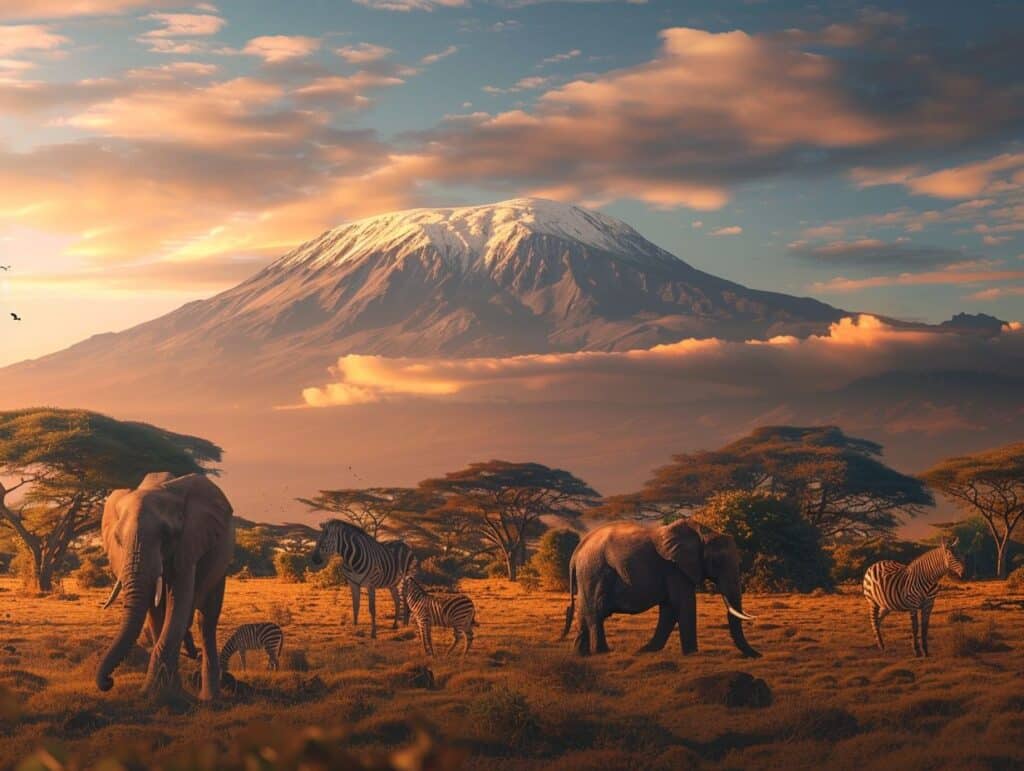
If your primary aim is to see Africa’s iconic wildlife, including the Big Five, we recommend exploring other major national parks in Tanzania, such as Ngorongoro Crater or the Serengeti. These parks offer incredible opportunities to witness majestic game animals, apex predators, and even the world-famous Great Migration.


We encourage you to stay observant during your visit to Kilimanjaro National Park, especially during a Kilimanjaro climb. As you ascend beyond the reach of vehicles or day hikers, your chances of spotting unique wildlife increase.
The fertile lower slopes of Kilimanjaro are teeming with fascinating animals and birds. Keep your eyes peeled during the day and night, as some intriguing nocturnal creatures are active after dark.
The rainforest zone, in particular, is home to extraordinary wildlife, such as the striking black-and-white colobus monkey, which adds to the magic of the trek.
Curious about the animals of Kilimanjaro? Are you wondering which route offers the best chances for wildlife sightings or where to focus your attention? Let’s explore these questions further!

Mount Kilimanjaro features five distinct climate zones, each with unique characteristics and wildlife:
Each Zone supports different animal species. However, while the lower zones of Kilimanjaro National Park are home to various wildlife, spotting these animals can be challenging. Climbers usually begin their journey above the habitats of many larger animals, such as elephants.
It’s important to note that a Kilimanjaro climb isn’t a traditional African safari. Instead, spotting unique and exciting wildlife during the trek is a bonus to the thrill of the adventure. To truly immerse yourself in Tanzania’s incredible biodiversity, a safari after your Mount Kilimanjaro Trekking is one of the best ways to celebrate your achievement.
Now, let’s dive into the fascinating animals found on Mount Kilimanjaro and within Kilimanjaro National Park.

Kilimanjaro National Park is home to a fascinating array of wildlife, including:
Elephants, Cape buffaloes, leopards, and black rhinos are members of the prestigious Big Five. Black rhinos are critically endangered, making Tanzania one of the rare places where you can still spot them.
The larger animals, such as elephants and buffaloes, usually inhabit the lower slopes of Kilimanjaro. Fortunately, they stay away from trekking camps. Although they occasionally venture into the forest or higher regions, you’ll unlikely see them during your trek. However, you might come across their tracks.
During your climb, the focus shifts to smaller animals like monkeys, commonly seen along the trails.

Monkeys are among the most common animals you’re likely to encounter on a Kilimanjaro climb. The rainforest belt is home to various Old World monkey species, and spotting them is a highlight for many trekkers.
As you trek through the forest zone during your ascent and descent, watch for blue monkeys (also known as diademed monkeys), which are relatively bold and often seen near human activity. Watch for the shyer black-and-white colobus monkeys, known for their striking appearance and graceful movements among the trees.
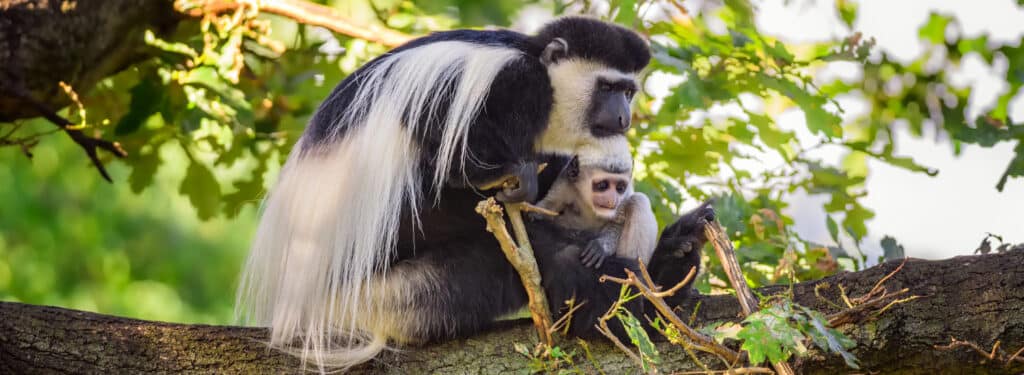
Kilimanjaro is home to several antelope species, including:

Most of Kilimanjaro’s wildlife resides in the park’s lower two ecological zones, but some animals venture into the moorland zone, where they can be easier to spot. Among these are klipspringers, common elands, and grey duikers.
Common elands, also known as oryxes, are large antelopes. Adults weigh between 400 and 940 kg and stand about 1.6 m tall at the shoulder. They are the second-largest antelope species, surpassed only by the rare giant eland.
Klipspringers are small antelopes and the sole members of their genus. Weighing up to 18 kg (40 lb), these tiny creatures are nocturnal and typically monogamous. They are unique in their ability to walk on the tips of their hooves, which helps them navigate rocky terrain.
Abbot’s duikers are an endangered species found only in three areas of Tanzania. These elusive creatures, with dark brown coats and distinctive red tufts on their foreheads, are rarely seen. They are nocturnal and prefer to stay hidden in dense vegetation, making sightings extremely rare.

Chameleons are among the fascinating wildlife found on Kilimanjaro, particularly on the lower slopes. A standout species is the three-horned chameleon, also known as Jackson’s chameleon. Native exclusively to East Africa, this unique creature is easily recognized by its three prominent horns — though only males possess them, as females are hornless.
Another intriguing species is the slightly smaller Kilimanjaro two-horned chameleon or Dwarf Fischer’s chameleon. This species is native to northern Tanzania and southern Kenya. Like its three-horned counterpart, only the males feature the characteristic horns.
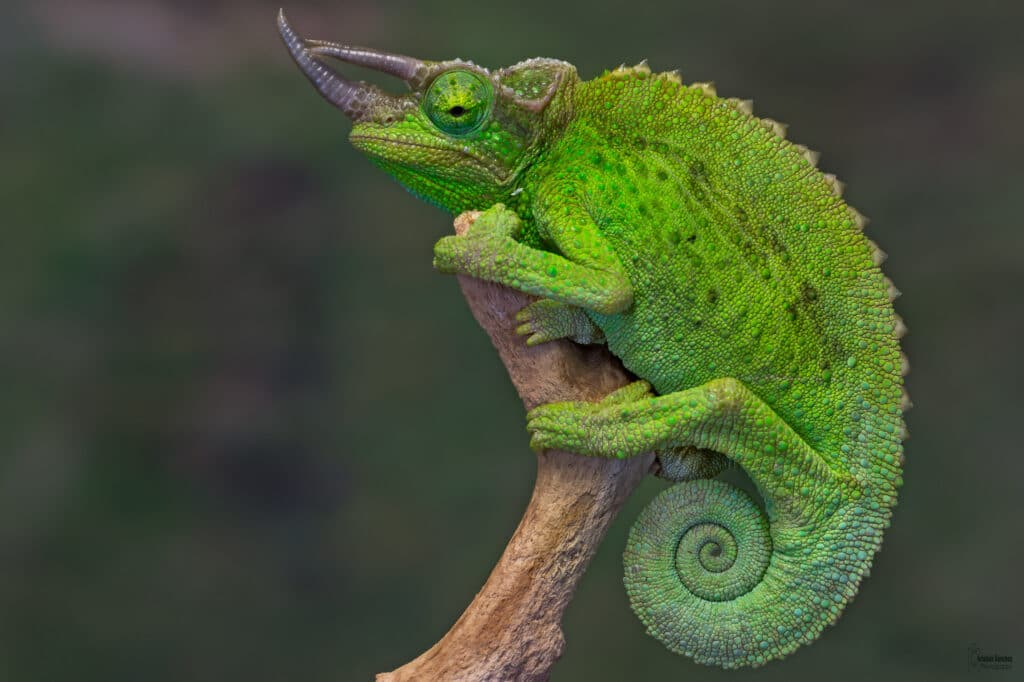
Besides klipspringers, other nocturnal animals to watch for include bush babies and tree hyraxes.
Bush babies, also called galagos or nagapies (their Afrikaans name), are known for their adorable features, including large, round eyes, big ears, and bushy tails. These shy creatures are pretty elusive and can be challenging to spot.
Tree hyraxes, or tree dassies, are more commonly seen. You might even hear their distinctive screeches echoing from your camp. Despite their tiny stature, thesee small, rabbit-sized animals are fascinatingly distant relatives of elephants and manatees (sea cows!
Astoundingly, tree hyraxes – small nocturnal animals weighing around just 2 kg – are distantly related to elephants!
Besides klipspringers, other nocturnal animals to watch for include bush babies and tree hyraxes.
Bush babies, also called galagos or nagapies (their Afrikaans name), are known for their adorable features, including large, round eyes, big ears, and bushy tails. These shy creatures are pretty elusive and can be challenging to spot.
Tree hyraxes, or tree dassies, are more commonly seen. You might even hear their distinctive screeches echoing from your camp. Despite their tiny stature, these small, rabbit-sized animals are fascinatingly distant relatives of elephants and manatees (sea cows)!
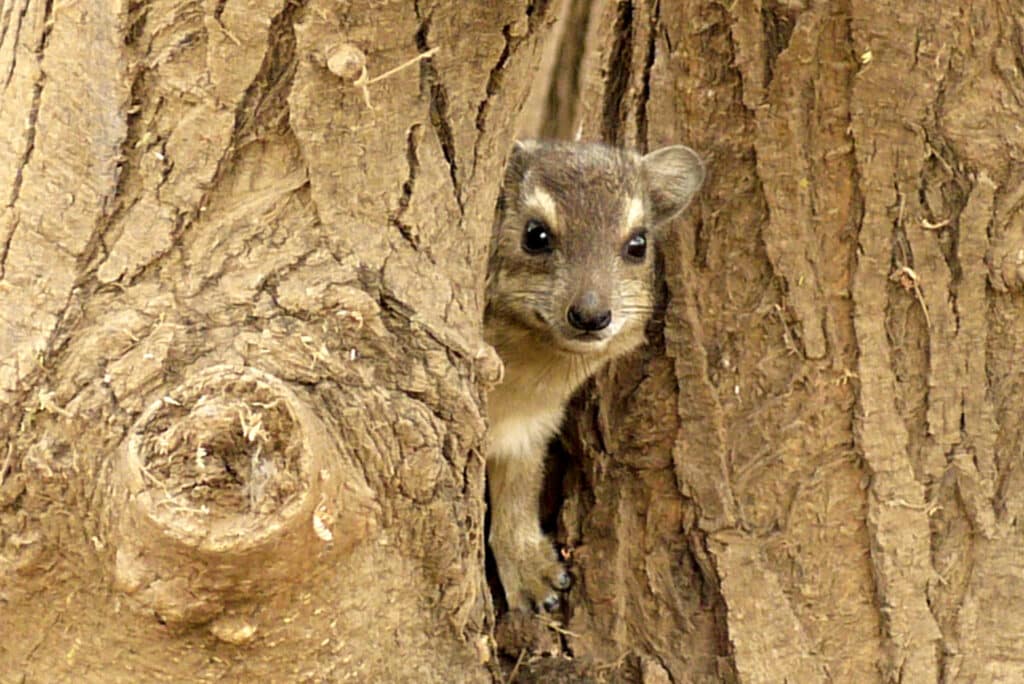
Kilimanjaro National Park is also a haven for bird enthusiasts, boasting 179 recorded species. Unlike the larger wildlife, birds are abundant along the trekking routes, offering plenty of opportunities for birdwatching as you ascend the mountain.
Keep an eye out for these fascinating species:
With such a variety of birds, your trek is bound to be filled with delightful avian encounters!
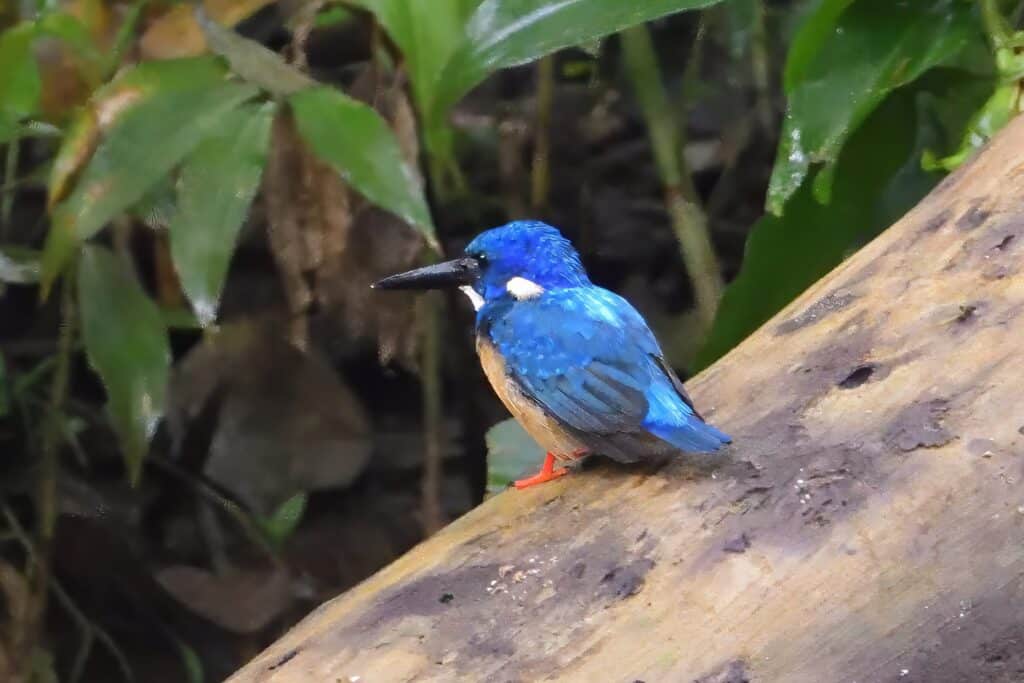
White-necked ravens are a common sight at Kilimanjaro’s moorland campsites, so keep an eye out for these striking birds. You can also spot kingfishers in the forested areas, including the stunning African pygmy kingfisher.
The rare Abbot’s starling, a beautiful two-toned bird found only in Kenya and Tanzania, inhabits the forest and is a thrilling discovery. The vibrant emerald malachite sunbird, known for its dazzling colours, can also be spotted here.
Lastly, the ultimate prize for birdwatchers is the elusive African pitta, often considered the “holy grail” of African birds. It can also be found in the mountain forest.

Some Kilimanjaro routes are known for offering better opportunities for animal and bird viewing than others.
Here, we highlight the top three routes for wildlife sightings on Kilimanjaro.
The Northern Circuit, also known as the Grand Traverse, is the best route for animal spotting.

Here’s why we recommend this route:
Similarly, the Rongai route ascends from the northeast and descends via the Mweka route. It shares many of the wildlife advantages of the Northern Circuit, making it another excellent choice for animal spotting.
The Northern Circuit is arguably the best route for seeing animals on Kilimanjaro.

The Lemosho and Machame routes are both excellent choices for wildlife enthusiasts. These routes offer a gradual ascent through dense rainforests and a descent through a completely different forest section. The rainforest zone is where you’ll encounter Kilimanjaro’s most diverse wildlife and birdlife.
In contrast, while similar to Lemosho, the Shira route starts above the rainforest. In our view, this bypasses the opportunity to experience the vibrant wildlife in the forest. Additionally, the Marangu route requires retracing your steps on the descent, which some climbers find less appealing.

Naturally, the longer you spend on the mountain, the more animals you’ll likely see. So, an eight-day Lemosho itinerary is better than a seven-day Lemosho itinerary.
If you’re a wildlife enthusiast, we recommend taking a guided day walk through the forest at the base of Kilimanjaro.
While most people associate Kilimanjaro with climbing to the summit, there’s another fantastic way to experience the mountain – through a guided day hike! This is a perfect option for those who may not have the time, fitness, or desire to trek to the top but still want to enjoy the beauty of the mountain.
Kilimanjaro National Park offers several scenic and rewarding day hikes. For example, you can explore the rainforest section at the start of the Lemosho or Marangu route, where you’ll encounter wildlife such as monkeys, birds, and butterflies. After soaking in the beauty, you can turn around and hike back to the starting point.
Alternatively, you can drive up to Shira Plateau and begin your hike from there, enjoying breathtaking views.

Here are some popular day hike destinations through the forest:
Please note that the park’s daily entrance fee still applies for day hikes.
Did you know that “Marangu” is a Chagga word that means “place of water”?

Head of written content